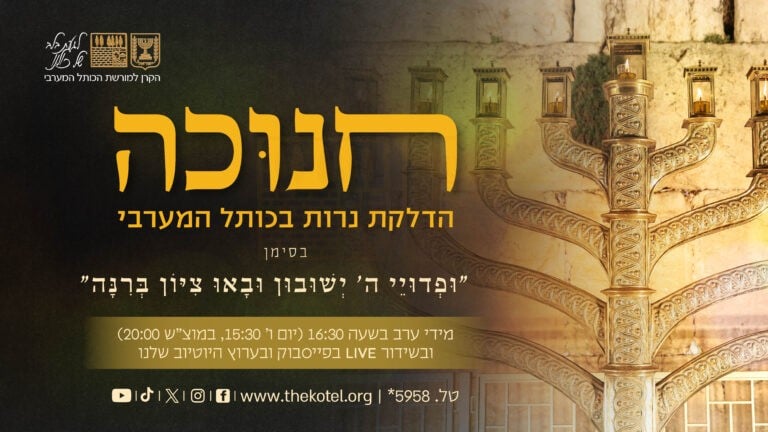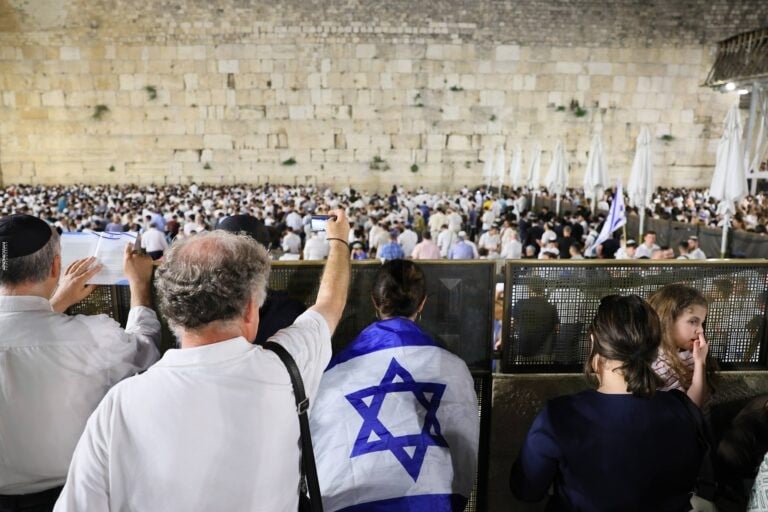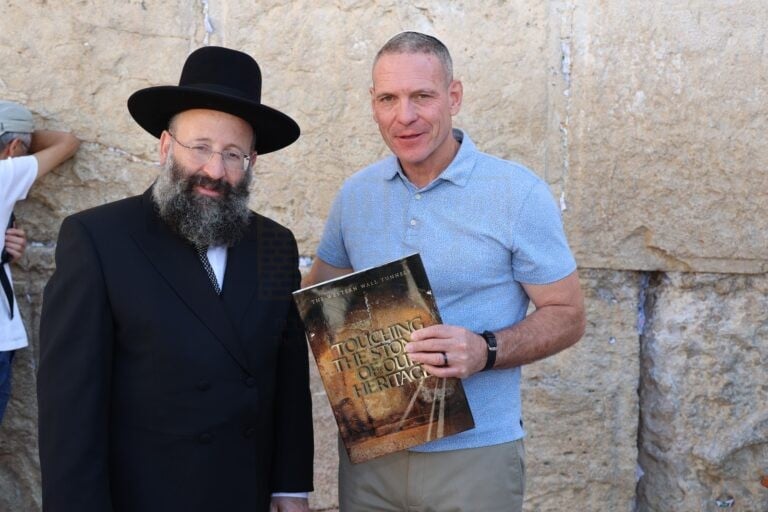Parashat Toldot 5786
Rabbi Shmuel Rabinowitz, Rabbi of the Western Wall and Holy Sites
In the Torah portion of Toldot, we encounter one of the most human and profound scenes in the entire Torah – a meeting between two brothers, Jacob and Esau, which reveals how powerful the desires embedded in human nature can be.
Abraham our forefather passed away five years earlier than decreed for him so that he would not witness his grandson Esau turning to an evil path. Esau, as described, spent his time hunting – an occupation symbolizing a person driven by impulse, acting out of momentary passion.
At that same time, the righteous Jacob was preparing a lentil stew for his father Isaac, as part of the mourning custom to eat round foods, a symbol that life moves in cycles. Suddenly, Esau bursts into the house, exhausted and hungry. When the smell of the stew fills the room, he exclaims:
“Let me gulp down some of that red, red stuff, for I am faint.”
(Genesis 25:30)
He even repeats his words, to emphasize his urgency. As the Chizkuni commentary explains:
“It is the way of a person to repeat his words when he is in haste to ask for something – and this man was weary and eager to eat.”
At that moment, Esau sees only himself. He shows no regard for the family’s mourning or for the purpose of the dish. What consumes him is his immediate hunger. His submission to his appetite was complete. His craving for food overpowered him to the extent that, as the Torah tells us, for a mere bowl of hot lentil stew he agreed to sell Jacob his birthright – a spiritual status of lasting significance.
From this story comes the familiar expression, “selling for a mess of pottage,” still used today to describe someone giving up something precious in exchange for something trivial and fleeting.
As a result of that moment of weakness and passion, Esau received his name – Edom (meaning red) – a name that would mark not only him but also his descendants.
Earlier, his connection to the color red had already been mentioned:
“The first one emerged red, like a hairy mantle all over.”
(Genesis 25:25)
But only now, through his act, the color red becomes more than an external sign. It becomes a symbol of essence: a representation of the inability to resist temptation, of surrender to impulse. Thus arose the term Bnei Edom, “the children of Edom,” a lasting reminder of the moment a person yielded to emotion and desire rather than choosing spirit and wisdom.
Rabbi Samson Raphael Hirsch explains that the word “hal’iteini” (“let me gulp”) is related to “lahat” – to swallow with eagerness. Esau was not drawn only to the food itself, but to its red color. It reminded him of the blood of the hunt, of the thrill of pursuit. Rabbeinu Bachya and the Kli Yakar also saw red as a symbol of Esau’s temperament, linked to the planet Mars, the planet of blood and war. They explained that Esau’s desire was not for the stew as food, but for its red appearance, which revealed his true nature – fiery and impulsive, under the sign of Mars.
Our sages recognized that every person has inborn tendencies. The Talmud states:
“One who is born under the sign of Mars will be a shedder of blood. Rav Ashi said: either a surgeon, a thief who kills, a slaughterer, or a circumciser.”
(Shabbat 156a)
Rav Ashi teaches us that choice lies in human hands, to channel one’s energy for good or for evil, to use that same power for a mitzvah or for sin.
Here lies the great lesson. The attraction to red, a symbol of passion, power, and dominance, is natural. But the real question is: who controls whom? Modern culture often encourages surrender to impulse – “live in the moment,” “try everything” – but the Torah teaches differently: not to suppress desire, but to direct it. To turn the red – the color of desire – into white, the color of purity and balance.
This is humanity’s eternal challenge: not to give in to impulses and the desire for immediate gratification, but to steer it toward a higher purpose.









